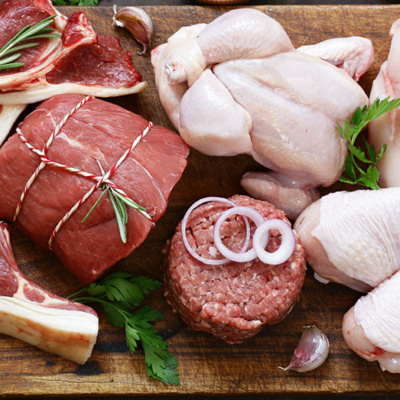top of mind news
- N.Y. Plans To Ban Polystyrene Restaurant Container
- 5 Simple Ways to Introduce Tech into Your Restaurant
- Why Restaurants Should Interact with Review Sites
- 8 Food and Drink Trends For Restaurants To Watch For In 2020
- Restaurant Gift Cards Appeal To 72% of Consumers, Survey Finds
THE FARM
Poultry
Chicken output rebounded following the Thanksgiving holiday, with heavier bird weights pushing ready-to-cook production 9.4% over a year ago. Amid larger availabilities, wholesale broiler prices have been rising, with breast meat and leg quarters leading the upside. Still, Q1 pricing for chicken breasts is likely to run mostly in line with year ago levels. The wing markets are searching for their seasonal low before experiencing their typical increases as the Super Bowl and March Madness nears. Pricing on chicken wings throughout 2020 may run below the elevated price levels in 2019, with buying chances being more prevalent throughout the upcoming spring and summer seasons.
Beef
Following the aggressive early December 679k head harvest, last week’s cattle slaughter came in at a more modest 662k head, but heavier year-over-year carcasses continue to add pounds to total beef production versus a year ago. The wholesale beef markets are in the midst of their seasonal declines, with the middle meats leading the losses. The ground beef items have struggled to find new buyers, but likely scored their annual price lows in last week’s trade. Anticipate seasonal upside price action for the grinds into late January. Imported lean beef prices are declining as well but are expected to hold premiums to a year ago.
Pork
Pork production backed off its early December pace, but the 592.7 million pounds produced last week was still large by historical standards. Wholesale pork prices remain relatively firm amid escalating production but have been trending lower since early November. Pork belly prices below a $1.00 are attractive, because upside risk still exists heading into early 2020. The pork 72s are easing from their recent historic price highs but remain well above a year ago. Further downside potential is likely, but pricing is forecasted to remain above 2020 levels.
THE SEA
Seafood
The snow crab markets continue to trade at elevated levels. During October, the U.S. imported slightly more snow crab than the previous year. World supplies remain limited. The Alaskan snow crab fishing season is progressing slowly with the bulk of the catch not likely to be landed until after the holidays. Even still, fairly tight snow crab supplies are expected to persist which should underpin the markets into the spring.
THE GARDEN
Produce
The tomato markets remain expensive. Adverse weather in Mexico has shortened near term shipments with supply challenges expected to persist. Florida shipments have been subpar as well. Last week, U.S. tomato imports from Mexico were down 7.1% from the prior year. Domestic tomato shipments last week fell 22.5% from the previous week and were 22.1% less than the same week last year. The tomato markets are expected to be volatile during the next several weeks. Conversely, U.S. avocado imports remain strong with trade from Mexico last week up 14% versus the previous year.
THE KITCHEN SINK
Dairy
The cheese markets are seasonally declining. Cheese barrel and block prices have fallen 21.2% and 29.1% respectively from their 2019 highs, which is more than average, but prices did reach multiyear highs this year. Forward purchasing some of your pending cheese needs may be considered, especially if prices weaken further. Spot butter prices have risen modestly from the 37-month low set earlier this month. Strong retail butter feature activity is occurring which may support prices in the near term, but production and stocks are adequate. Buying some of your 2020 butter needs may be considered.
Grains
Soybean oil futures this week rose to their highest levels in over a year. Argentina, the world’s largest soybean oil exporter, increased export tariffs on soybean products this week, and a new biodiesel blenders tax credit in the U.S. was attached to a new government spending bill. Both could increase demand for U.S. soybean oil.
Oil
Per the EIA, this week’s national average retail gasoline price was the lowest since March but 6.8% more costly than a year ago. The healthy U.S. economy along with active holiday driving hints the downside risk for gasoline prices may be limited.













